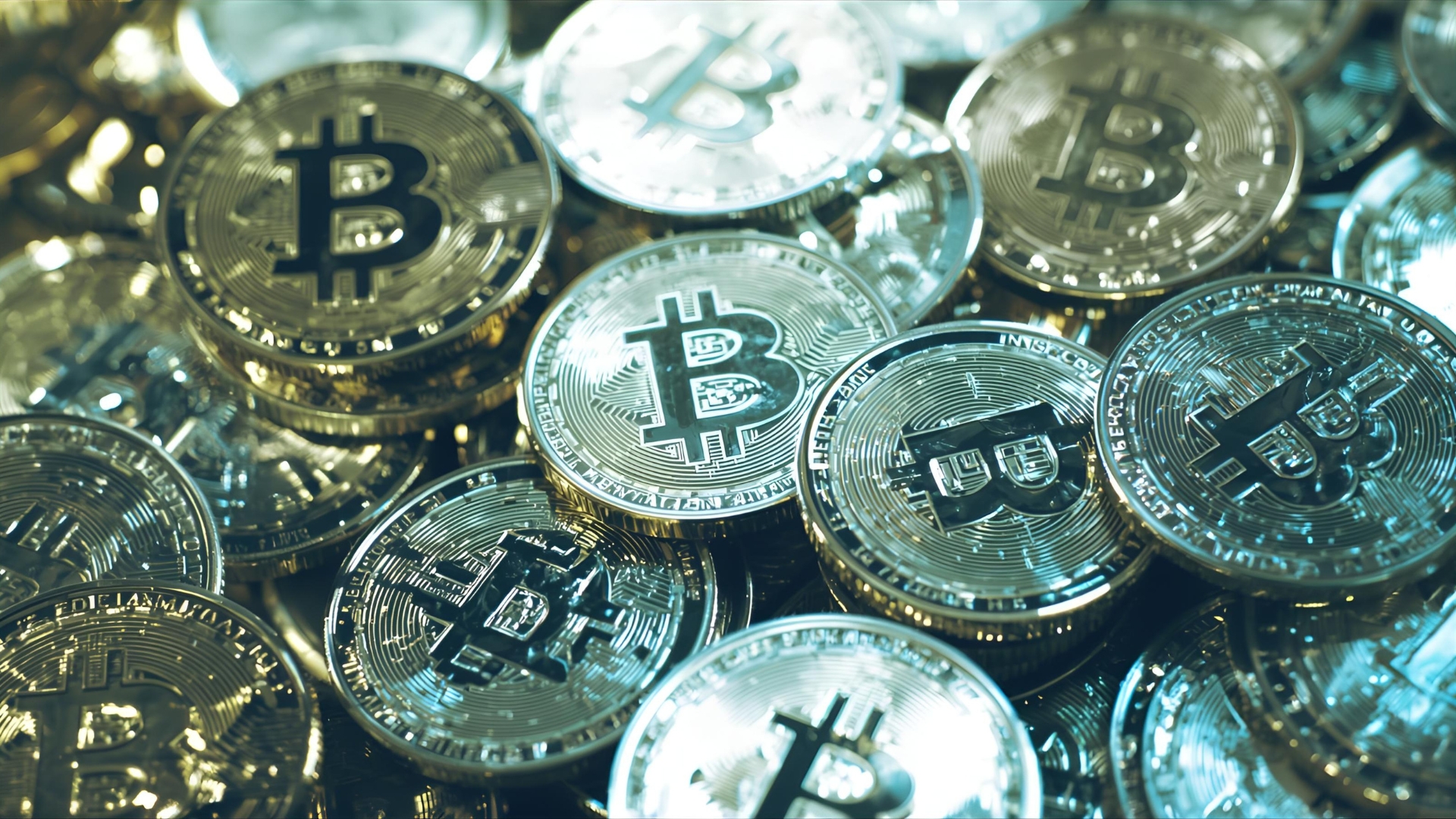Crypto News – Latest Cryptocurrency News & Trends
Stay on top of crypto news, market moves, regulation, and tech upgrades. Your essential brief on the latest cryptocurrency news, explained clearly...

The pace of crypto news never slows. From price action around Bitcoin and Ethereum to breakthroughs on high-throughput chains, stablecoin adoption, and evolving global rules, the latest cryptocurrency news can feel like a firehose. This in-depth report brings the moving parts together, allowing you to quickly scan the market while still understanding what actually matters.
We’ll connect headline moves with the structural forces behind them: spot ETF flows, network upgrades like Ethereum’s Pectra, client diversity on Solana, and the regulatory ramp in the EU under MiCA. Along the way, we’ll clarify why seasonal patterns and macro events can nudge cryptocurrency markets up or down, and what that means for builders, investors, and curious readers alike.
Market Pulse What’s Driving Prices Right Now?
Short-term crypto performance often reflects a mash-up of liquidity, macro headlines, and internal crypto-native catalysts. As we kick off October 2025, traders are watching the fourth-quarter “Uptober” narrative, historical seasonality, and policy headlines out of Washington. Recent coverage framed the week’s moves within U.S. political uncertainty, with Bitcoin and large caps reacting around government funding debates, a reminder that macro risk can spill over to risk assets—even as correlations to equities ebb and flow.
Beyond a day or two of price candles, a more durable driver this cycle has been the spot Bitcoin ETF complex in the U.S. While cumulative net inflows since the January 2024 approvals remain massive, daily flows have become choppy at times, including a notable net outflow patch in late September. These ETF tides can amplify both rallies and drawdowns by channeling traditional capital directly into or out of BTC.
Seasonality matters, but structure matters more. After the April 2024 Bitcoin halving, which reduced miner rewards from 6.25 to 3.125 BTC, supply issuance decreased again. Halvings don’t guarantee straight-line gains, yet they tend to compress sell pressure at the margin and re-anchor long-term narratives—especially when paired with easier on-ramps like ETFs.
Reading On-Chain and Off-Chain Signals Together
On-chain data—think exchange reserves, realized profits, or L2 activity—tells you where crypto-native flows might head next, but in 2025, you can’t ignore off-chain vehicles like ETFs and derivatives venues that increasingly steer price discovery. When ETF flows, funding rates, and on-chain liquidity all point in the same direction, moves can accelerate; when they diverge, choppy trading occurs. That’s why professional desks track both order-flow plumbing and old-school macro signals (rates, the dollar, liquidity).
Ethereum After Pectra What Changed and Why It Matters

Ethereum’s 2025 has been quieter than 2024’s Dencun fireworks, but the Pectra upgrade (activated on mainnet in May 2025) delivered meaningful improvements for users and validators. The upgrade advanced account abstraction and ergonomics for wallets, strengthened validator UX, and supported Layer-2 scaling—cementing a path where consumer-grade security (multi-factor authentication, social recovery) and seamless innovative wallet features become the default rather than a niche.
L2s, Fees, and the UX Flywheel
The medium-term thesis for ETH is straightforward: as Layer-2 ecosystems reduce fees and accelerate confirmation, more mainstream use cases—such as payments, gaming, social, and DeFi — with consumer-grade UX become viable. Pectra isn’t a magic wand, but it’s part of a steady march toward a network where users don’t juggle seed phrases and gas settings. For builders, that means designing for smart accounts and bundled transactions; for investors, it means valuing Ethereum not just as “digital oil,” but as a platform whose LSI keywords include smart contracts, rollups, staking, and tokenized assets.
Solana’s Throughput Story and Client Diversity
Solana grabbed headlines over the past two years for high throughput, low fees, and surging developer activity across DeFi and NFTs. But performance at scale demands resilience. In 2025, the conversation matured from “TPS bragging rights” to client diversity—the most critical reliability upgrade a high-performance chain can make.
Solana’s network health reports track the production Agave/Jito client and the upcoming Firedancer client from Jump, which aims to increase redundancy and reduce the likelihood that a single client bug could disrupt the entire chain. The shift from a single dominant client to multi-client resiliency is a significant development for uptime, validator decentralization, and long-term trust.
Why Client Diversity is a Security Feature
Multiple validator clients create software heterogeneity, a classic safety principle: if one implementation hits a bug or targeted exploit, others keep the chain alive. For users, that translates to fewer halts and better finality in busy markets. For developers, it reduces tail risk that can torpedo launches. And for institutions—exchanges, market makers, custodians—client diversity lowers operational risk, inviting deeper liquidity.
Stablecoins in 2025 Quiet Rails, Big Numbers
Outside of price headlines, stablecoins are the stealth utility killer app. In Q2 2025, total stablecoin market cap hovered around the quarter-trillion mark, with USDT leading market share and USDC posting notable year-over-year growth. Meanwhile, traditional payments giants are experimenting with stablecoin settlement rails for faster cross-border and treasury flows—evidence that tokens are seeping into “boring but massive” financial plumbing.
Why Stablecoin Policy is the Next Frontier
Rules are catching up. The EU’s MiCA framework entered into force in 2023 and rolled out in two waves: stablecoin (ART/EMT) rules took effect on June 30, 2024, and broader crypto-asset and service-provider rules took effect on December 30, 2024. In 2025, ESMA finalized guidance packages and warned against CASPs marketing their regulated status in ways that confuse consumers—part of the post-FTX push toward clear disclosures and prudential standards.
The upshot: issuers must meet capital, governance, and disclosure obligations; CASPs (crypto-asset service providers) require authorization and ongoing supervision across member states, creating a unified EU passport regime. Several legal summaries confirm the phased application dates and compliance expectations that now shape euro-area stablecoin and exchange strategies.
U.S. Landscape ETFs Now, Legislation Loading
In the U.S., the spot Bitcoin ETFs remain the big structural story, functioning like pressure valves that bring retirement and advisory capital in or out with a simple ticker. Net flows fluctuate between positive and negative daily, but the category’s cumulative impact since approval continues to underpin BTC liquidity and narrative. Watching those flows—alongside macro prints and Fed signaling—has become table stakes for crypto traders.
On the policy front, 2025 saw movement on Capitol Hill with bills like the Digital Asset Market Clarity Act (the “CLARITY Act”) advancing through committees, aiming to codify jurisdictional guardrails between the SEC and CFTC. This isn’t law yet, but the direction of travel is toward more apparent federal oversight, especially over digital commodities and intermediaries.
Why Clarity Matters for Builders and Institutions
Clearer rules reduce regulatory arbitrage and enable institutions to build with confidence, selecting custody partners, risk models, and token structures that won’t be compromised by enforcement uncertainty. That’s essential for the next wave of on-chain capital markets: tokenized funds, real-world assets, programmable treasuries, and compliant DeFi primitives that talk to the fiat world.
Beyond Prices The Themes Shaping the Next 12 Months
1) Tokenized Finance Goes Practical
“Tokenization” has been a buzzword for years, but now the rails exist—stablecoin settlement, L2-driven fees, and institutional-grade custody—to push tangible assets on-chain. Expect more experiments with on-chain money markets backed by T-bills, repo, and short-duration credit, with composable risk disclosures and programmable cash flows. MiCA’s harmonized regime in Europe, combined with evolving U.S. legislation, provides the compliance framework.
2) Wallet UX Crosses the Chasm
With account abstraction maturing on Ethereum and better identity primitives across ecosystems, wallets can feel like apps instead of key-management chores. Think biometric recovery, session keys, and gas sponsorship are becoming standard. As that happens, onboarding stops being a cliff, and apps (games, social, commerce) can finally front-load fun or utility instead of seed phrases.
3) Client Diversity Becomes Non-Negotiable
Solana’s client push is the poster child, but other L1s and L2s are taking the hint: resilience isn’t optional at a global scale. Audited, independent clients, plus modular infrastructure (separate consensus/execution, with robust light clients), will be a routine due diligence requirement for any chain courting serious liquidity.
4) The Rise of Quiet Rails
Payment brands piloting stablecoin settlement won’t always trumpet every integration. But even tiny percentages of cross-border volume migrating to token rails translate to billions of dollars in flow and demonstrable cost/time savings. Those steady, boring integrations can compound faster than flashy crypto-native launches.
5) Macro Still Matters
Inflation prints, rate expectations, and dollar strength set the background music. When policy shocks occur—such as shutdowns, budget standoffs, or unexpected guidance—BTC often reacts first, pulling the rest of the altcoins along, even when the crypto-native story is strong. That’s why risk management beats prediction.
Read More: Biggest Crypto News This Week Markets, ETFs & ETH
How to Read the Latest Cryptocurrency News Without Getting Lost

Separate Signal from Noise
Every day brings a flood of crypto news, including token listings, hack disclosures, NFT mints, and governance votes. The trick is to weigh the structural against the sentimental. Structural stories—such as ETF flows, protocol upgrades, and regulatory milestones—shift the center of gravity. Sentimental stories—memes, influencer threads—move intraday momentum. Your edge comes from knowing which is which.
Triangulate Price, Flows, Fundamentals
When you read “Bitcoin surges” or “ETH dips,” ask three questions:
-
Price: Is the move statistically significant for the timeframe?
-
Flows: Are ETF flows, funding rates, or exchange balances confirming or fading the move?
-
Fundamentals: Did something change in code (e.g., Pectra), policy (e.g., MiCA/CLARITY), or big-ticket adoption (e.g., stablecoin rails)?
If two or three answers align, the headline is likely meaningful.
Respect the Calendar
Crypto still has seasonal quirks—Q4 often carries bullish lore—but the real calendar to watch is roadmaps and rulebooks: upgrade dates, RTS publication windows under MiCA, or Congressional mark-ups. Anchoring trades or strategy to these scheduled catalysts is more repeatable than betting on vibes.
Regional Lenses EU vs. U.S. vs. the Rest
Europe has become a live sandbox for regulated crypto, thanks to MiCA’s two-phase rollout and ESMA’s final guidance. Firms aiming to serve EU customers must internalize consumer protection and prudential rules—no more regulatory patchwork across member states. This has already started shaping product design for euro-denominated stablecoins, exchange listings, and marketing copy (to avoid misleading claims).
In the United States, federal legislation is inching forward while market infrastructure (spot ETFs, qualified custodians) sets de facto standards for institutional participation. Any eventual stablecoin or market-structure law will likely focus on reserves, disclosures, and a jurisdictional split between the SEC and CFTC, an axis that the CLARITY Act aims to draw cleanly.
Elsewhere, jurisdictions compete on licensing speed and tax policy. Still, the next differentiator will be interoperability with bank-grade payment rails—the quiet work of integrating stablecoins, tokenized deposits, and compliant on-ramps, so users never notice the underlying infrastructure.
Security Still Rules Everything Around Me
Amid bullish talk, security remains the North Star of crypto. Smart-contract audits, real-time monitoring, bug bounties, and battle-tested multi-client stacks are table stakes. The shift to account-abstracted wallets can reduce user-error losses, but it also introduces new attack surfaces around relayers and bundlers. Post-MiCA, regulated CASPs must demonstrate that their market-abuse and safeguarding controls are adequate; in practice, this means implementing tighter surveillance, more precise Terms and Conditions, and more conservative risk policies, all of which enhance trust among mainstream users.
Builder and Investor Playbooks for the Year Ahead
For builders, align roadmaps with what policy makes inevitable: compliant fiat rails, simple wallets, and modular infra. Design your app for non-experts: invisible fees via gas sponsorship, human-readable signing prompts, and sane recovery flows. Leverage L2s for cost and speed, and treat client diversity as an SRE requirement, not an afterthought.
For investors, favor those that compound: stablecoin rails creeping into cross-border payouts; L2 ecosystems standardizing developer UX; chains that harden reliability with multi-client stacks. Maintain a dashboard that tracks ETF net flows, major roadmap milestones, and policy calendars to ensure visibility and transparency. Use position sizing and hedges—because even good theses meet bad weeks.
Conclusion
The latest cryptocurrency news portrays a market that’s maturing in structure, even as prices remain volatile. ETFs channel traditional capital into BTC; Ethereum’s Pectra quietly improves everyday UX; Solana fortifies its base with client diversity; stablecoins seep deeper into real-world payments; and MiCA sets the global standard for comprehensive crypto rules, while U.S. legislation inches toward clarity. If you track the structural currents—not just the splashy waves—you’ll read crypto news with sharper context and make better decisions, whether you’re building apps, allocating capital, or simply staying informed.
FAQs
1) What is the single most important driver of Bitcoin’s price right now?
Structure. Spot Bitcoin ETF flows have introduced a new, sizeable demand (or supply) valve. Daily net inflows/outflows fluctuate with short-term movements, while long-term supply has tightened following the halving. Track ETF flow dashboards in tandem with macro headlines for the clearest read of momentum.
2) How did Ethereum’s Pectra upgrade affect users and developers?
Pectra advanced account abstraction and improved validator UX, paving the way for wallets with multi-factor security, social recovery, and gas-sponsored transactions. It also supports the broader L2 scaling arc, making mainstream-friendly apps easier to ship.
3) Why does “client diversity” on Solana matter?
Running multiple independent validator clients (Agave/Jito today, Firedancer coming) reduces the risk that a single bug can disrupt the network. It’s a core reliability upgrade for any high-throughput chain, improving uptime and institutional confidence.
4) What does the EU’s MiCA mean for exchanges and stablecoins?
MiCA’s two-phase rollout moved stablecoin rules into effect on June 30, 2024, and CASP/other token rules into effect on December 30, 2024. In 2025, ESMA finalized guidance and warned firms against marketing that blurs the distinction between regulated and unregulated products. Expect clearer disclosures, authorization requirements, and harmonized supervision across the EU.
5) Are stablecoins really seeing real-world adoption?
Yes. The market cap sits in the hundreds of billions, and traditional payment networks are piloting stablecoin settlement to expedite cross-border payouts and treasury operations. The biggest consumer change may be invisible—money moves faster behind the scenes.
